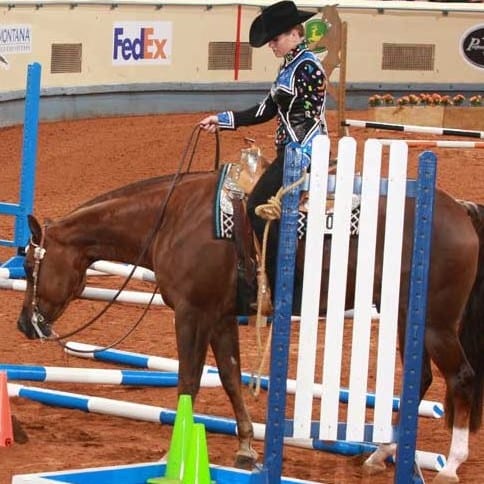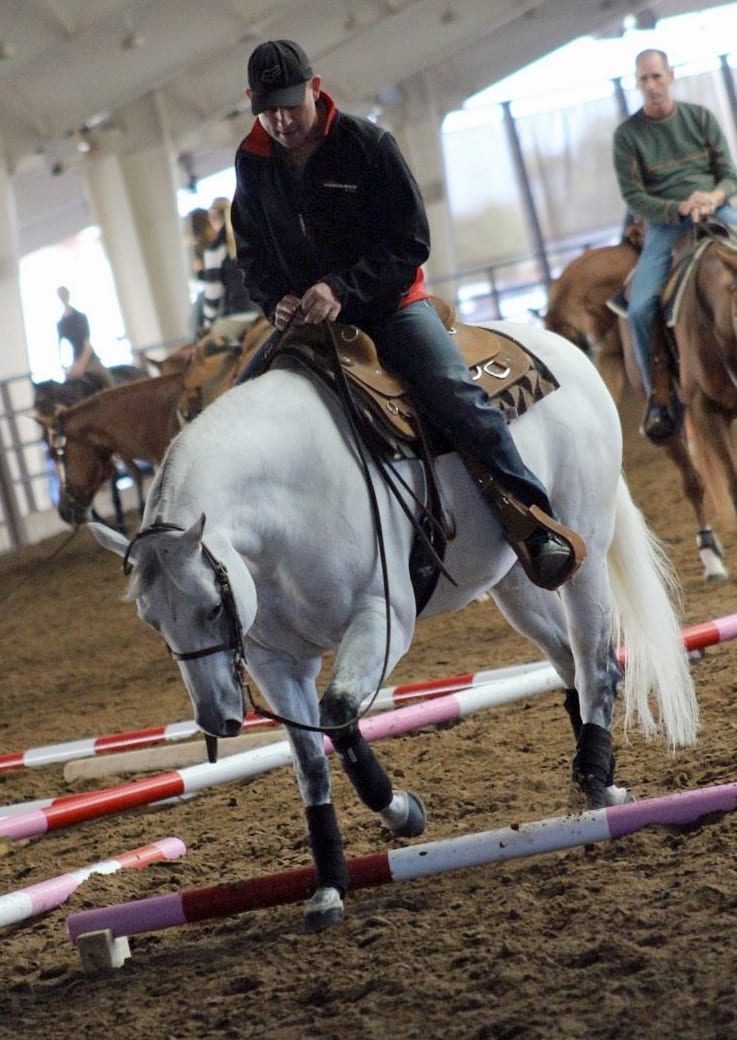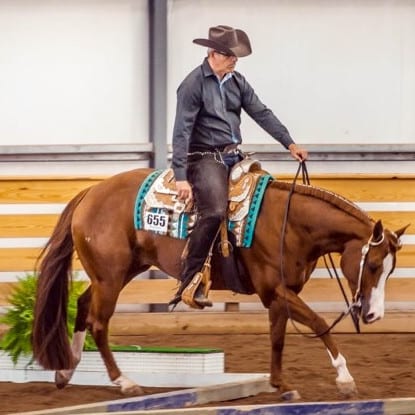The sheer diversity that the class of trail offers in regards to obstacles and maneuvers far outweighs any other class in the all-around and for that reason alone, it is difficult to master.
And while we could spend all day (or year for that matter) picking apart each obstacle that could possibly present itself in a trail pattern, the main focus of trail (as with any pattern class) should always be the overall picture.
GoHorseShow sat down with AQHA Professional Horseman, Gene Spagnola of Powder Brook Farm in Harwinton, Connecticut to give us 10 quick tips on how to master this incredibly technical class.
While this may seem like a real no-brainer, the fact is, not enough time is spent practicing trail at home.
Spagnola said, “Expose your horse to as many different obstacles as you possibly can. Get your hands on old patterns and practice them. Ask your friends, search the internet. The more obstacles you practice at home, the less you will struggle when you get to the show.”
Let’s face it. To excel at anything you have to practice, practice, practice. Don’t treat trail any different.
 2) Take Advantage of Trail Warm-Ups
2) Take Advantage of Trail Warm-Ups
Trail warm-ups are offered at shows for a reason but it isn’t the time nor place to be doing what you should have already done at home.
“The point of trail warm-ups is to see how it is all going to fit together,” said Spagnola. “It isn’t a time to perfect an obstacle or do all your schooling, but to make a plan on how you are going to show the course. Which means, during your warm-up you need to do the entire course at least once. Don’t over-do it to where your horse anticipates, but take advantage of the fact that you can make your game plan ahead of actually showing the class.”
3) Walk the Course The Next Morning
 On the day that you actually show, Spagnola recommends walking the course on foot and take note of anything that may have changed in the set-up between the warm-up and the show pen.
On the day that you actually show, Spagnola recommends walking the course on foot and take note of anything that may have changed in the set-up between the warm-up and the show pen.
“You need to have the pattern in your hand and get comfortable with your path,” he said. “Walking the course on foot is like setting your mental GPS. It helps you to be aware of the strides within each obstacle and plan everything out.”
 4) Take One Obstacle at a Time
4) Take One Obstacle at a Time
By taking advantage of the trail warm-up and by walking the course, an exhibitor has already done themselves a huge favor.
Spagnola said, “It is important not to get ahead of yourself as you’re showing and this is where the warm-up and walking the course really help you out. If you are in the middle of an obstacle, yet your mind is on the next one, you’re going to make a mistake. When you really know the course, it is a lot easier to not get ahead of yourself because you already know what’s coming.”
 5) Path and Rhythm Create A Successful Pattern
5) Path and Rhythm Create A Successful Pattern
A beautiful trail pattern that has a lot of rhythm to it which is created by the rider knowing the path they are going to take and understanding their horse’s stride.
“You need to know the pace your horse needs to be at to create the proper length stride,” said Spagnola. “Six foot for the lope, three foot for the jog, and two foot for the walk. You will need to adjust your horse’s pace to create the proper distance needed and know which path will get you there in order to have a nice rhythm.”
For example, in a wheel, you need to know where you need to cross over each pole (the path) to achieve that six-foot distance and also make sure your horse’s stride matches it (the rhythm).
 6) Don’t Carry Mistakes to the Next Obstacle
6) Don’t Carry Mistakes to the Next Obstacle
Everyone has a horror story (or multiple) about a faux pas they made in a trail class. This is horse showing, after all, and we all make mistakes. But how we handle our mistakes will ultimately determine our overall success.
Spagnola said, “You can have a rough obstacle and still do well. But if you have a rough obstacle and fall apart, and carry that into the rest of your pattern, the rest of it is going to be rough too.”
It’s been said multiple times and multiple ways, but it bears repeating. Treat each class as a clean slate, but when it comes to trail (and other pattern classes) each obstacle/maneuver should be treated as one, too.
 7) Every Obstacle Counts the Same
7) Every Obstacle Counts the Same
Remember this little tad bit as you are practicing at home.
“Slow obstacles need to be practiced just as much as the poles,” said Spagnola. “Poles aren’t worth more than the slow obstacles or vice versa. They all count the same and should all be practiced the same amount.”
So much emphasis is always placed on pole work that people often forget about the slow obstacles. This will only hurt you in the long run.
Author’s Note: For more on slow obstacles, check out this article.
 8) Don’t Leave Your Best Work in the Practice Pen
8) Don’t Leave Your Best Work in the Practice Pen
It happens to all of us at some point, we go to practice before the class, our horse decides to be less than stellar, and so we go to work. And we work. And we work. And we work some more.
Then, we go into the class and it all falls apart anyway.
Spagnola has a remedy, “Don’t over work your horse. I’ve seen some of the best work done in the practice pen only for it to be overdone and then the performance suffers.”
Remember, horses are horses, not motorcycles. They have a brain, they get tired. Tired horses don’t show as well. Be careful how much work you do prior to the class.
9) Don’t Forget About Transitions
In addition to forgetting about practicing slow obstacles, people will often just set up one obstacle to practice at home. This isn’t doing you any favors. Remember, there is negative space between each obstacle in the show pen that you have to navigate and it will require transitions.
about practicing slow obstacles, people will often just set up one obstacle to practice at home. This isn’t doing you any favors. Remember, there is negative space between each obstacle in the show pen that you have to navigate and it will require transitions.
“You don’t have to set up a whole course,” said Spagnola, “but two or three obstacles in a row that you can practice your transitions between them is a good rule of thumb.”
 10) Watch Other People At the Shows
10) Watch Other People At the Shows
It’s no secret that trail days are long days at the show, but instead of just waiting around at the stalls or overworking your horse in the practice pen, head to the stands and watch other competitors.
“Look at the path people are taking and where people are having trouble,” Spagnola said. “This is a very helpful tool that everyone, especially youth, and amateur exhibitors can use to help them make a plan.”
Summary
Trail is a class that requires a great deal of planning to succeed and in today’s world all the elements needed are generally available and they most certainly are available at the big shows.
Do your homework at home, do your planning at the shows, and you will inevitably see an improvement in both your performance and your score.










